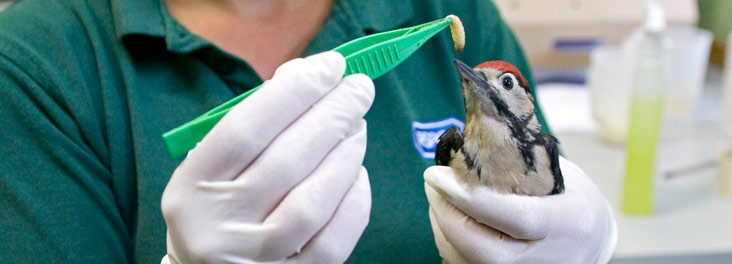Wildlife science
The way we work
The specialist staff in our wildlife team take a pragmatic approach, using science and common sense to try and improve the welfare of captive and free-living wild animals.
We conduct research, promote awareness of animals' needs, and encourage consideration of welfare when interacting with animals. We also work practically, rehabilitating wild animals that come into our care.
Why not take a look at our pages covering many aspects of wildlife - including animals in captivity, in the wild and rehabilitation. You can also find out what to do if you find an injured or abandoned wild animal.
Some facts and figures
There are billions of wild animals in the world and many of them come into contact with humans. Unfortunately, these interactions don't often benefit animals, so wildlife is an important part of our work.
Wildlife in trade
- 100 million wild animals are traded internationally each year.
Wildlife in zoos
- 600,000 birds and mammals are kept in the world's zoos.
Britain has:
- 4 million anglers who catch 200 million fish each year
- a commercial fishing fleet that catches 1,000 million fish every year.
Wildlife in our homes
- 1.1 million UK homes keep non-domestic (exotic) pets.
- At 12 million animals, non-domestic pets outnumber our cats or dogs.
Each year in Britain:
- 3 million wild mammals are shot, snared or trapped
- 15 million wild birds are shot
- 20 million rats and mice are killed as pests.
Unintentionally, each year, we kill and injure British wildlife
- 1 million mammals are killed or wounded by cars.
- Our cats kill and injure 100 million wild animals.
- 200,000 injured wild animals are admitted to Britain's rehabilitators.











